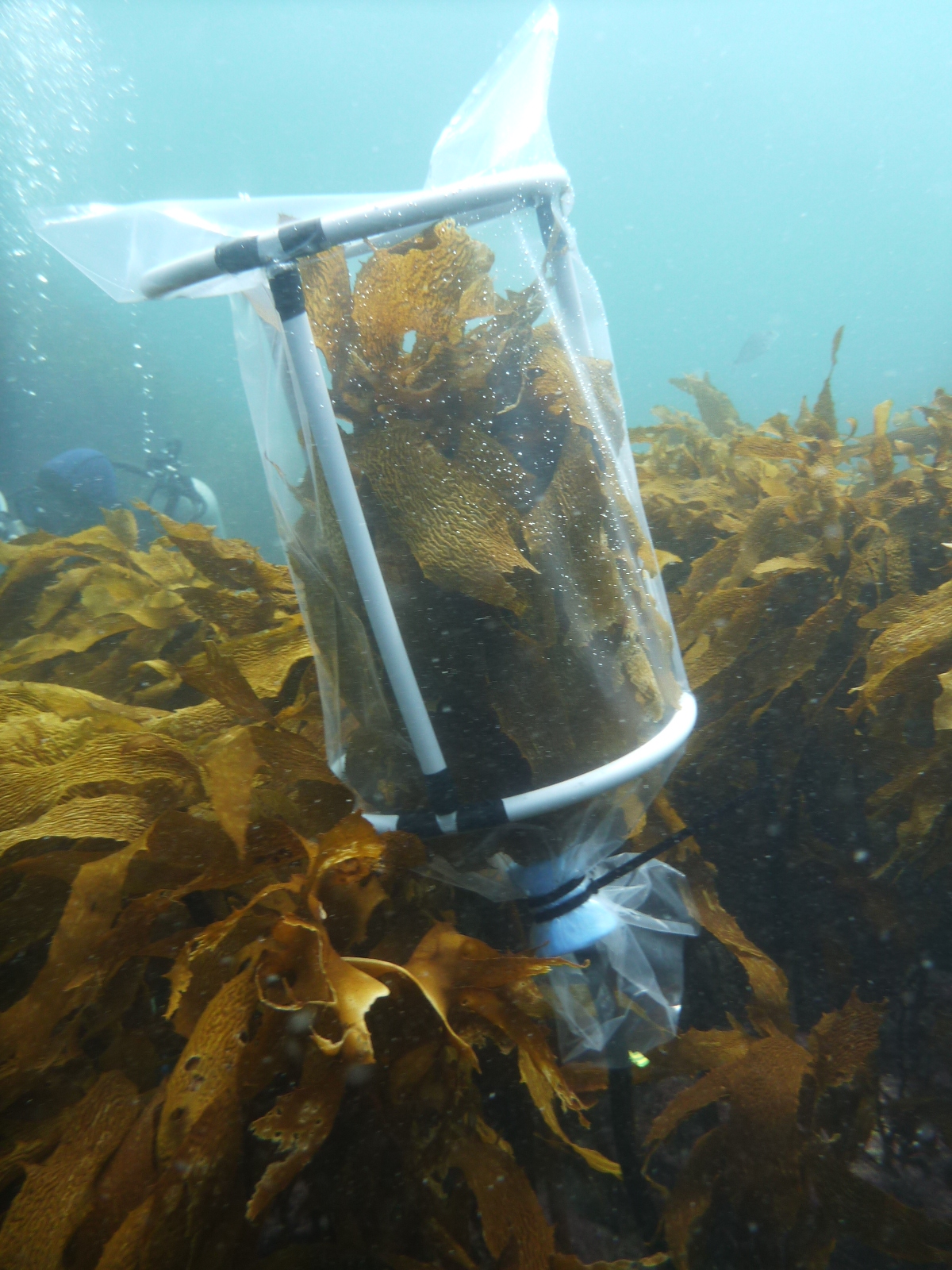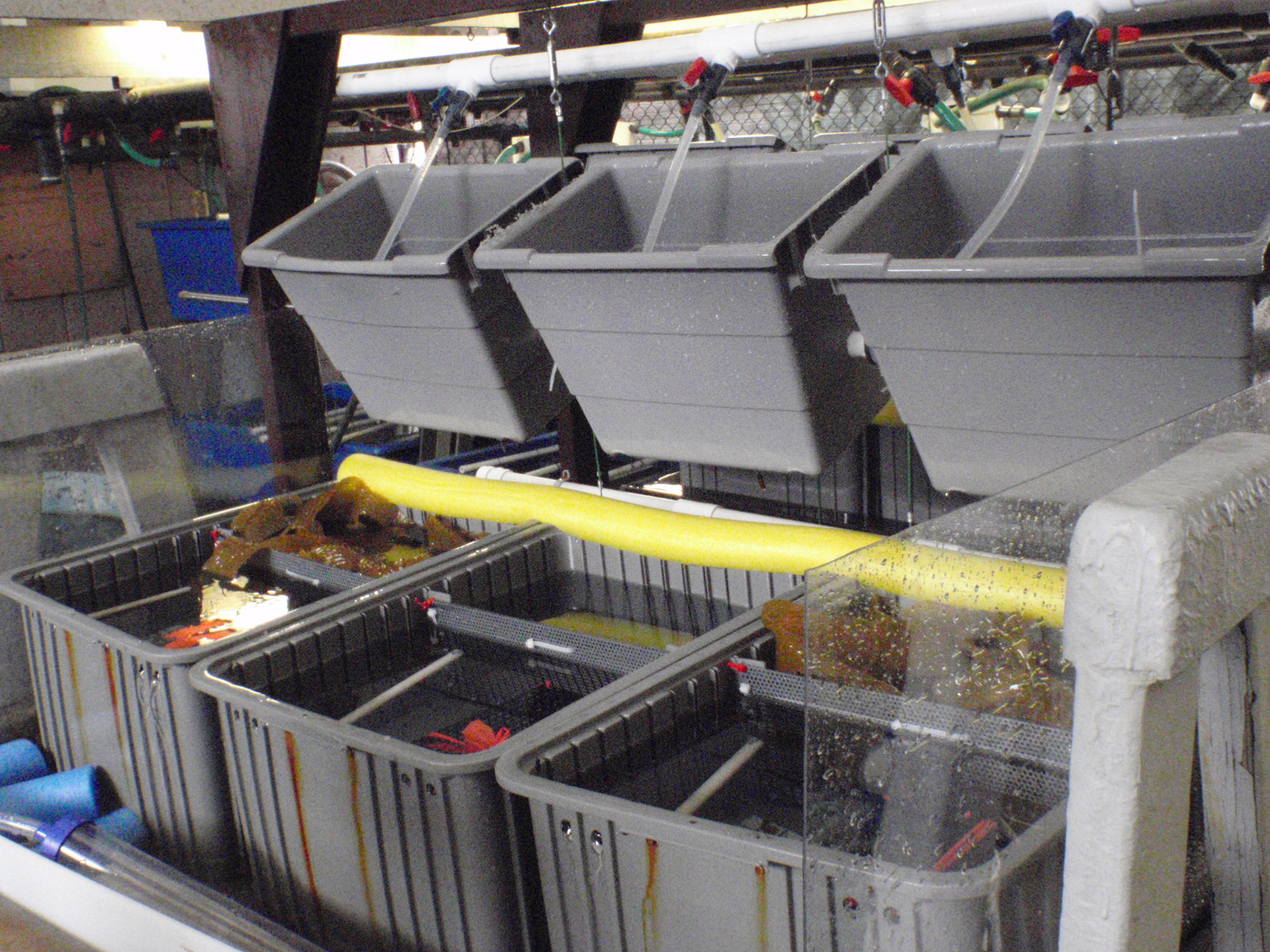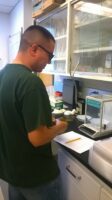
Kelp secured with zip-ties and plumbing hardware in big plastic bags.
Credit: Christie Yorke
By Christie Yorke of the SBC LTER
My graduate student research often involves combining mesh, zip-ties, PVC piping, and massive amounts of electrical tape to create experimental set-ups. I’ve zip-tied plastic bags around kelp to measure the stuff that sloughs off and put animals in homemade cages with kelp to measure how much they can eat in a day. I’ve also designed tipping buckets that mechanically agitate kelp to test if the kelp can be utilized by animals that filter small particles out of the water for food. I often find myself designing and building things that would benefit from much larger (i.e., tens of thousands of dollars) budgets than I’m allotted. Alas, this means that I must wander the aisles of Home Depot, and sometimes Smart & Final, to find items designed for entirely different purposes that I can re-purpose for my experiments. Who said being a scientist means you aren’t creative?

Yeah, those are filter feeding tunicates secured to bathroom tiles with super glue…
Credit: Christie Yorke
Recently, I volunteered to lead community college students through a small experiment in order to expose them to kelp forest research. I was excited to be a mentor because I too was once a community college student and I now do my own graduate research. I thought it would be fun to take a well-tested kelp grazing rate experiment and add a fish to the mix in order to test how the sight and smell of a fish might affect the grazing rate of invertebrates that feed on kelp. Seeing and/or smelling the fish might frighten small invertebrate grazers, leading them to spend all of their time hiding rather than eating. I thought this was a relatively straight-forward experiment that would allow these young scientists to be wow-ed by the experience of handling live animals in a real research setting.

DIY tipping buckets. Take note of the yellow pool noodle used to cushion the buckets when they tip.
Credit: Christie Yorke
A week before the experiments were set to begin, I realized that I needed 40 cages that would be the size of a kelp blade (the algae equivalent of a plant leaf), as well as see-through. I needed my invertebrates to be safe from being eaten but be able to both see and smell the fish! I had no such cages. Additionally, there is often very little to no budget for volunteer or side projects such as these. This is how I found myself wandering the aisles of Smart & Final, looking for something clear that would work as a cage that I could cut holes into and then glue in mesh panels. I originally thought I might find clear plastic tubs with a snug screw on lid. I did find those tubs, but they were $5 a piece and I could not afford to spend $200 on such a small, but necessary, part of this project. What I needed was some inexpensive, clear containers that I could cut up to fit my needs. I continued to wander around the store for about an hour, gazing discontentedly at various pieces of frosted, costly tupperware. People came and went as they completed their shopping and the employees started looking uncomfortable with my continued presence in their store. Finally, I found the perfect thing – clear plastic disposable salad containers – $24 for a 100 pack!

The “Cages”
Credit: Christie Yorke
I promptly bought them, made a cage prototype, and set our summer intern to work with a hot glue gun and a bolt of nylon mesh. The final product was something that I (and our hard working intern) am truly proud of to this day. The experiments went off without a hitch, though the data was pretty messy, which is the case with a lot of ecological data. The results seemed to indicate that only some of the invertebrates were truly scared by the presence of the fish, while others grazed normally. It’s possible I need to change the experimental design and add more fish in each tank next time. Clearly, more trials are needed in the future, and now that I have my great salad box cages, I can perform the experiments again next summer with more students!

Students working hard and testing out those salad containers.
Credit: Christie Yorke

Students working hard and testing out those salad containers.
Credit: Christie Yorke

Christie is a 4th year PhD student at the University of California, Santa Barbara studying the transport and fate of kelp within the kelp forest. She likes to go SCUBA diving and loves taste testing her study organisms.










